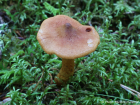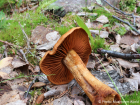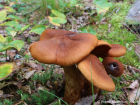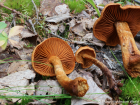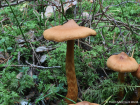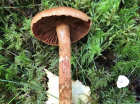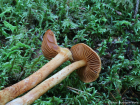Cap conical to convex (partly flattening at maturity but retaining a slight or sometimes pronounced umbo). In colour, it is a tawny to date brown with paler margins and often covered in fine, fibrous scales. The margin is often slightly rolled down even in fully mature specimens. Gills initially covered by a cobweb-like veil called cortina in young specimens, start as pale yellowish and turn rusty brown as the spores mature. They have an adnate or sometimes adnexed connection to the stipe. Stem often slightly bowed rather than straight, somewhat paler than the cap and usually retains fibres from the cortina, mottled with red. The flesh is cream or pale yellow, but more tan below the pileipellis and in the stem base. Spore print rusty reddish-brown.
Microscopic Features: The spores are ellipsoidal to sub-globose in shape, measuring approximately 9-12 µm in length and 6.5-8.5 µm in width. They have a rough surface.
Cortinarius rubellus on the www.first-nature.com web site.
Many mushrooms are poisonous, and some can be lethally toxic. Distinguishing between edible and poisonous mushrooms can be very challenging. Therefore, we strongly advise against consuming wild mushrooms. This website does not contain any information about the edibility or toxicity of mushrooms.
Although efforts have been made to ensure accuracy on this website, the information may contain errors and omissions. Therefore, all content provided is for educational and informational purposes only and should not be relied upon or used as a basis for consuming any plants or mushrooms.
External links are provided for reference only. We do not endorse or take responsibility for the content, advice, or products found on these sites or in any advertisements shown on this website.
